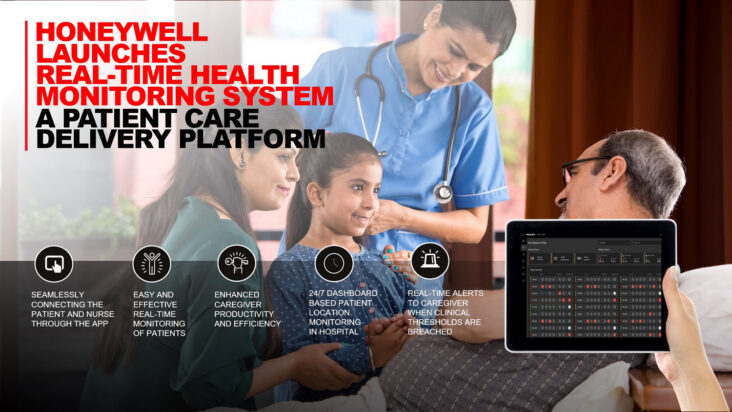Honeywell Real-Time Health Monitoring System Improves Caregiver Efficiency

Honeywell (Nasdaq: HON) announced today it has developed a real-time health monitoring system, which captures and records patients’ vital signs both within the hospital setting and remotely. Honeywell’s solution uses advanced sensing technology to monitor vital signs via a skin patch, which connects the data instantaneously to healthcare providers on mobile devices and an online dashboard.
The Association of American Medical Colleges projects there will be a physician shortage of between 37,800 and 124,000 physicians by 2034. Additionally, physician and nursing density in many MENA countries has been reported to be lower when compared to countries with similar income and a decline in physician densities was seen in several countries in the region. The situation exacerbates in the context of the healthcare sector, which is expected to grow 7% annually until 2025.
Hospital systems and healthcare providers are already preparing for the clinician shortfall by implementing technologies and tools to improve efficiency, while still maintaining high levels of care. Honeywell’s real-time health monitoring system provides doctors and nurses a solution to remotely monitor patients in the hospital or at home. The system, designed to be continuously connected to patients, alerts clinicians to changes in patients’ vital signs, and markedly reduces the time required to collect, analyze and apply patient data as actionable insights.
By automating essential processes, the remote monitoring system can help reduce clinician workloads and potentially save hours of error-prone administrative tasks. Across the healthcare industry, the growing trend of telemedicine and implementing remote patient monitoring is helping enhance the overall patient experience.
“Safety and attentiveness are basic expectations for patients being treated in hospitals, and continuous patient monitoring is a necessity for doctors and nurses to provide best-in-class medical care,” said Robert Robinson, healthcare vice president and general manager, Honeywell Sensing &Safety Technologies. “Our solution provides intelligent alerts in the system, helping healthcare providers monitor patients concurrently and improve response time when emergency intervention is needed. At Honeywell, we are committed to a future in which healthcare providers have digital tools to make their jobs more efficient and accurate, and where every patient can receive high-quality care – where and when they need it.”
This technology unlocks the ability to provide care for patients in the home, at ambulatory care centers or elsewhere outside of hospital walls. By bringing vital sign monitoring closer to where patients live,patients can receive care in their own environments, hospital readmissions can be reduced and beds can be freed up for those requiring in-person attention. Honeywell’s system will also help improve patient quality of life and satisfaction, an often overlooked benefit of remote monitoring. The ability to have vitals monitored in real time, regardless of where patients are, provides greater freedom and flexibility without needing to make regular trips to the hospital or being tethered to a hospital bed.
The healthcare industry is continuously evolving to maintain environments where clinicians can deliver high-quality care to patients. The real-time health monitoring system is part of Honeywell’s robust portfolio of healthcare technologies that drive better patient outcomes.


